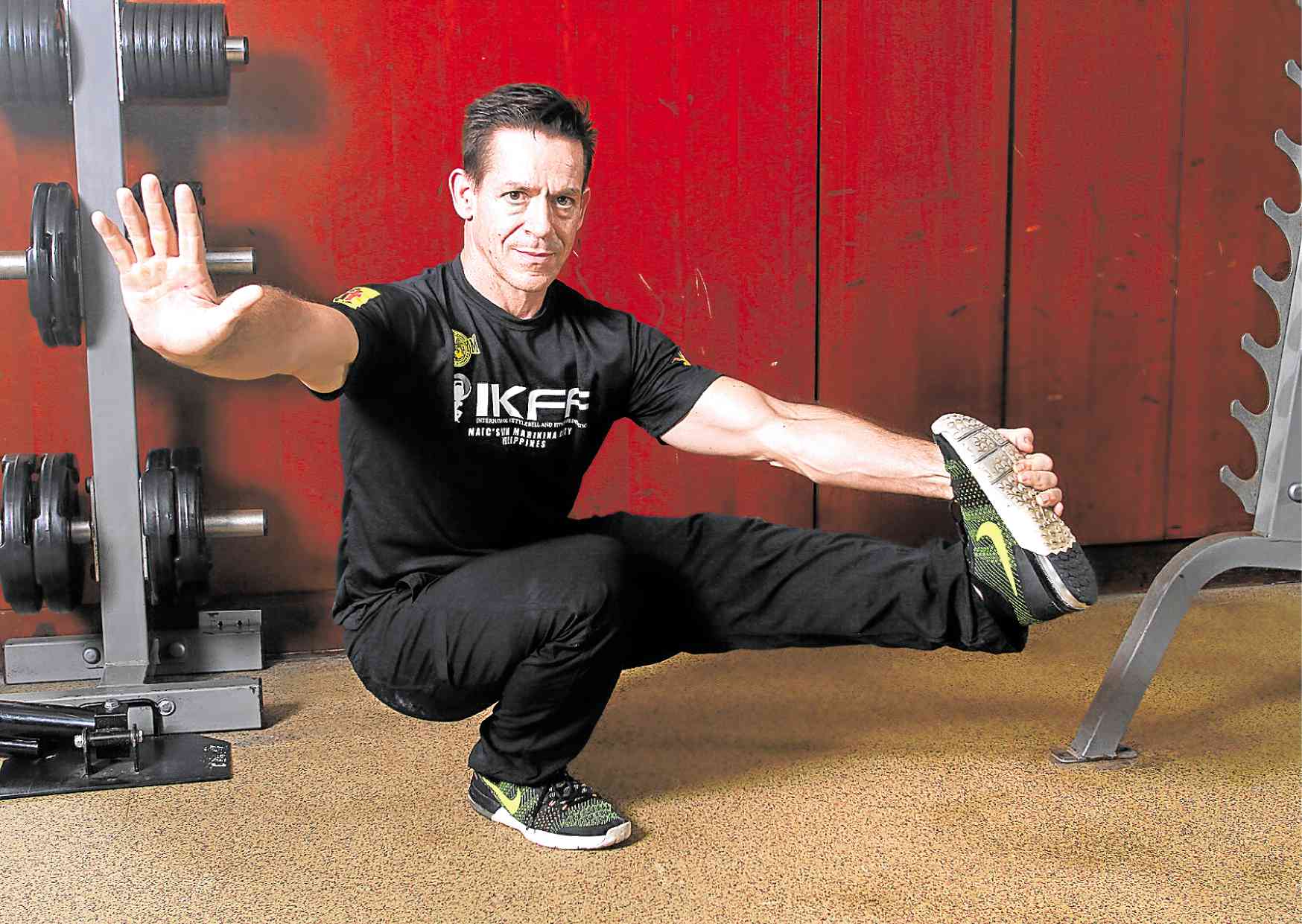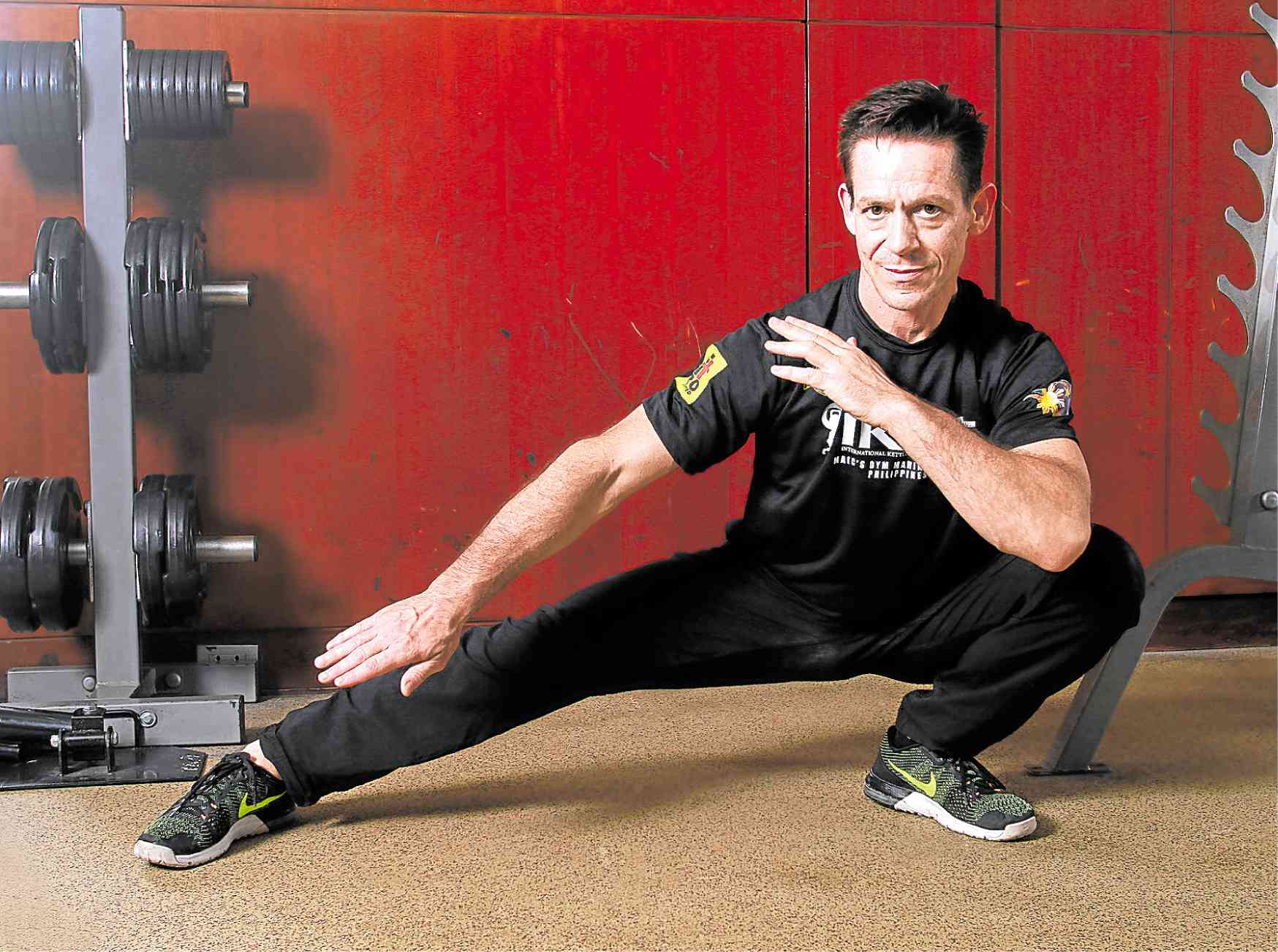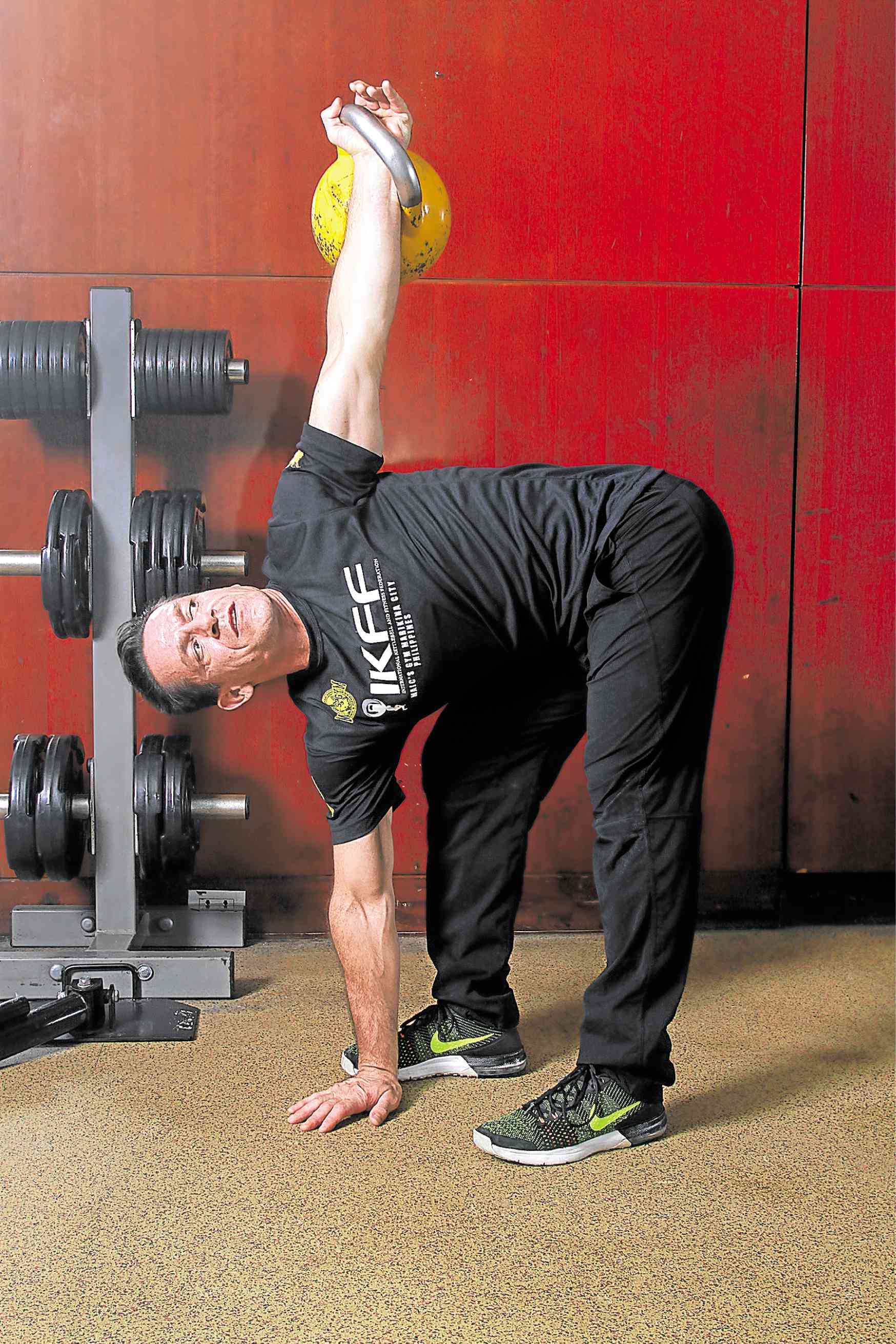
What’s old is new,” said American fitness expert Steve Cotter about trends in the new decade.
“People are moving away from traditional gyms toward exercises using their body weight,” he said. “The mind-body connection has become a phenomenon. There is more attention on mental health and breathing exercises to lower blood pressure and improve circulation. The trends are more about learning to optimize the use of the body and how exercise, nutrition and stress reduction integrate with a busy lifestyle. People work hard to achieve financial stability, but can’t enjoy the fruits of it because they’re either sick or stressed out.”
Cotter, founder and director of the International Kettlebell and Fitness Federation, recently conducted a workshop to certify instructors at Maic’s Gym in Marikina. His visit was organized by the Institute of Fitness Professionals, an internationally accredited fitness-solutions provider.
Cotter observed that exercise in the last decade ranged from Spartan sports such as marathons and triathlons to gentler martial arts and the ever-increasing yoga classes.
CrossFit, an intense workout combining endurance, weight resistance and calisthenics, became a sensation but has reached a plateau in the West. Yet it is still growing in Asia.
Women who were intimidated by working out with guys at the gym went to boutique fitness studios for cycling, and dance and barre workouts.

‘New smoking’
“Sitting is the new smoking” became the axiom for the dangers of a sedentary lifestyle. Experts advised that regular physical activity during short periods of time are just as beneficial as longer workouts.
Beyond physical matters, meditation has become mainstream, recommended by doctors, psychologists and managers as a remedy for stress and low self-esteem.
As more people are having sleeping difficulty, meditation, sleep and mindfulness apps are the new calmatives.
Cotter cited trends that emerged in the last part of the decade and will grow in 2020.
Wearable technology. The American College of Sports Medicine (ACSM) reported that wearable technology has been the foremost trend in the past four years. There are apps for fitness trackers, smartwatches and heart rate monitors that follow one’s heart rate, calories burned, and other activities.
“People want data to compare their progress,” said Cotter. “I don’t think technology is a long-term solution. It’s just getting impressed by gadgets. The effective methods are the tried and true—hard work and consistency over a long time. It’s about making lasting changes versus trends.”
Digital wellness. In a world of constant time pressure, more people will be downloading workouts on their gadgets so they can exercise anywhere at their convenience.

YouTube
“YouTube is a huge contributor although not all information is accurate. Twenty years ago, you had to seek out an expert to learn how to do a push-up. Now there are thousands of videos so people learn at a basic level,” Cotter said.
He added that fitness challenges have been heavily promoted on social media. “When you sign up, you are provided with an eating plan and videos that you can follow from your iPad. The general consumer doesn’t want to do a lot of thinking. It wants to be led on what to exercise, how many reps and how many times a week. People don’t have to spend a lot of money just to get the information, and will get value out of it for as long as they are willing to do the work.”
Community-driven fitness.
“Community” became a popular term, as more people linked up with others in the gym or studio as an antidote to their busy lives.
“‘You’re my tribe’ is a way that people feel a connection. When there is a social component, you don’t go to the gym just for exercise. It’s also about meeting up with your friends. This keeps people more committed than just doing a program by yourself,” said Cotter.

Daily tasks
Functional fitness training. Functional training develops the muscles used for daily tasks such as climbing stairs, carrying kilos of laundry and groceries and picking up objects or for sports. It aims to make the body move with ease by improving balance, coordination, muscular strength and endurance to prevent injuries.
Cotter cited the WeckMethod using the RMT rope as one of the latest functional training workouts which brings out the sweat without hurting the joints. “It uses ropes without the jumping,” he said.
Specific free weights training. Free weights such as kettlebells, dumbbells, barbells and medicine balls are said to be more efficient as they enable the user to load both sides of the body to prevent muscular imbalance.
Cotter has been traveling around the world teaching the correct technique for the kettlebell. This equipment is a cast-iron or steel ball with a handle, and comes in different weights. The workout can be performed anywhere.
“It’s been part of the gym culture but not everybody knows how to work with the kettlebell. I travel to show how to use it safely and effectively. You can get a full body workout in less than 30 minutes. Because it’s intense, it’s for someone who enjoys working hard,” he said.
Minimal equipment
Bodyweight training. You can build muscles without pumping iron by engaging full body tension. The workout is balanced with moving the body in different levels and directions to improve range and flexibility.
Cotter noted that bodyweight training uses minimal equipment, which makes it a more economical way to exercise effectively than buying a gym membership.
“You can exercise at home or in the park without having to spend,” he said.
Breath work. Breathing from the belly has been espoused in yoga, Pilates and martial arts to improve circulation, remove toxins and improve digestion and sleep.
“Not everyone is going to run, lift weights or swing the kettlebell. Breathing is important for exercise so you can maximize the full potential of the movement and get the oxygen into the tissues,” said Cotter.
Health/wellness and life coaching. With the rise of depression, anxiety and feelings of failure, behavioral science or psychology is being incorporated into promoting health. The health/wellness coach designs methods to improve the client’s diet, exercise, sleeping and emotional well-being.
The life coach looks into the client’s values, needs and objectives and lends guidance and support through behavioral change methods.
Employing certified fitness professionals. The ACSM cites the growing demand for hiring legitimate health fitness professionals who have undergone educational and certification programs as one of the top 10 trends in 2020.
“Technology has made people more passive. They spend more time in chairs and cars. Fitness helps to counteract the negative effects of a modern lifestyle,” said Cotter.
Fitness professionals are trained to improve the way their clients move in daily life and perform exercises correctly. This enables them to remain active and reduce risk of injury. Through scientific assessments, trainers can customize a program according to their client’s needs.
In progressive countries such as Japan and Korea, the demand for fitness instructors and personal trainers is high. Cotter envisioned that educated and accredited fitness professionals will be the country’s next export after nurses and caregivers.
“Filipinos have a strong work ethic,” he said. “They are willing to get jobs which Americans are not willing to do because they are a little soft and spoiled. They speak good English.
“In Japan and Korea, people work hard but are not getting enough fitness activities. They lack well-educated trainers there. Filipinos have a good reputation in the service industries. They are polite and caring. PT (physical therapy) is a service. You need someone who understands your needs and who can clearly communicate the instructions so you can make progress.”








































